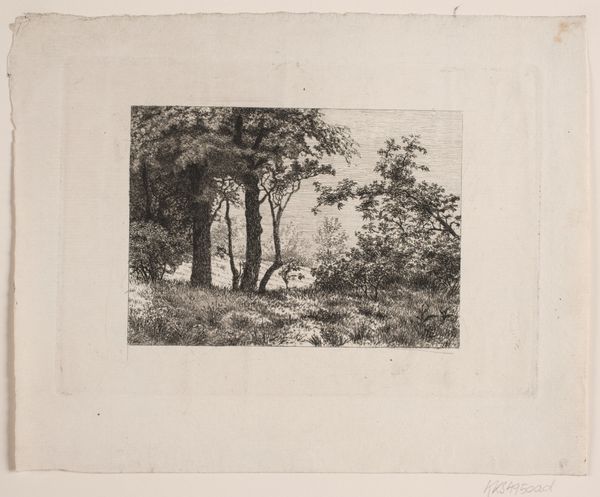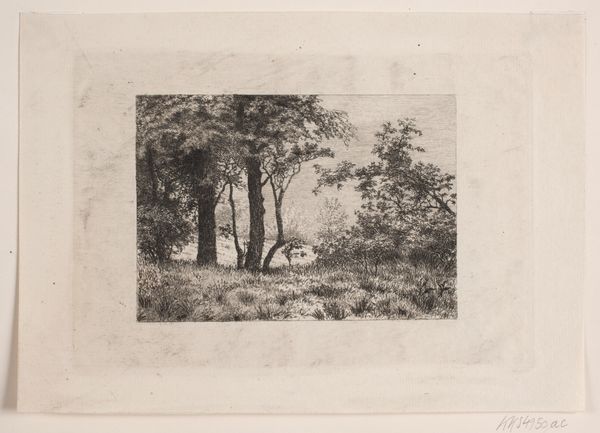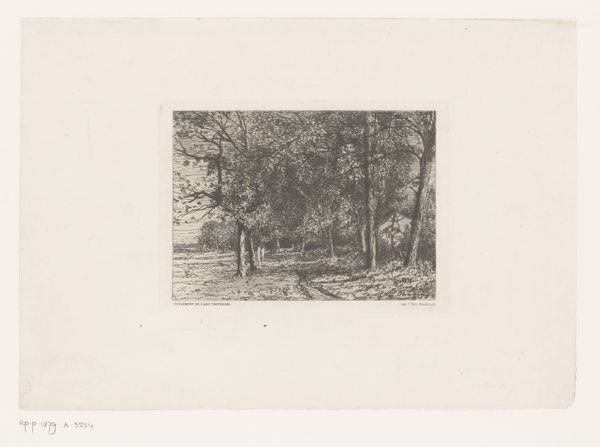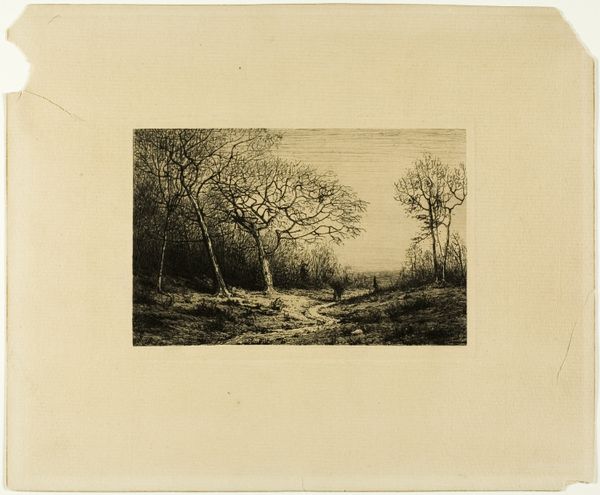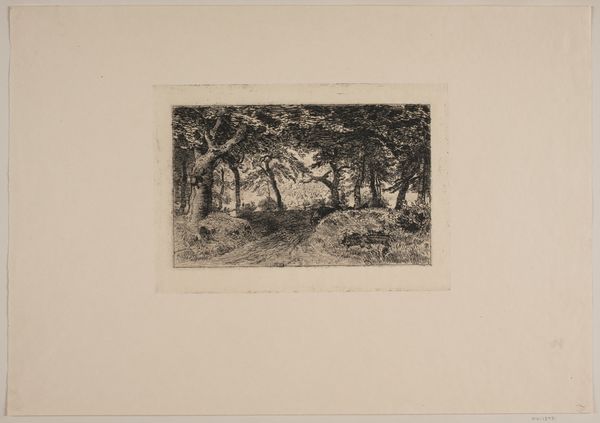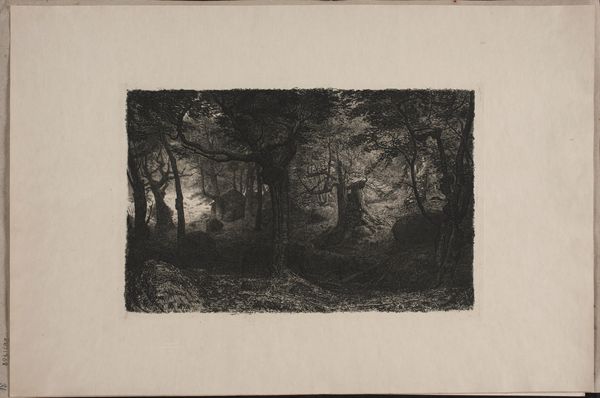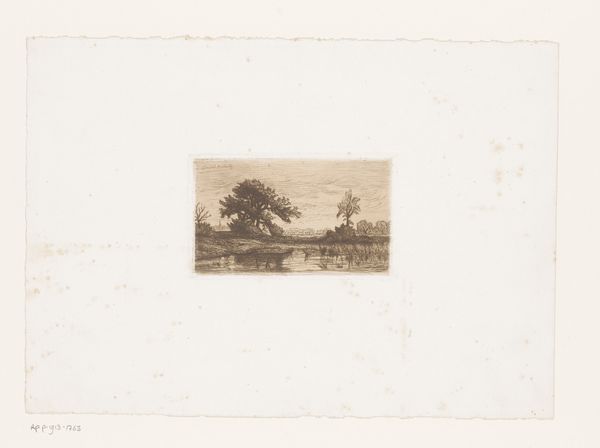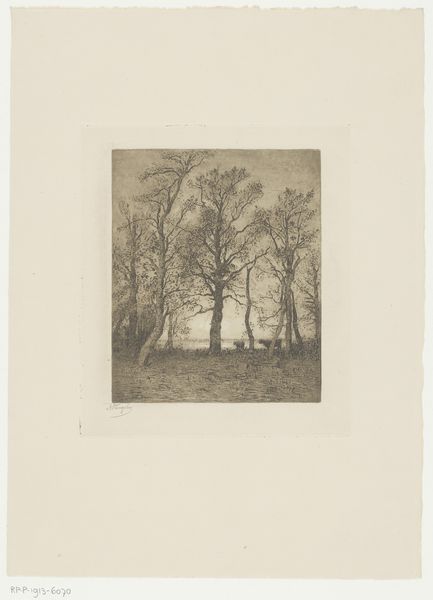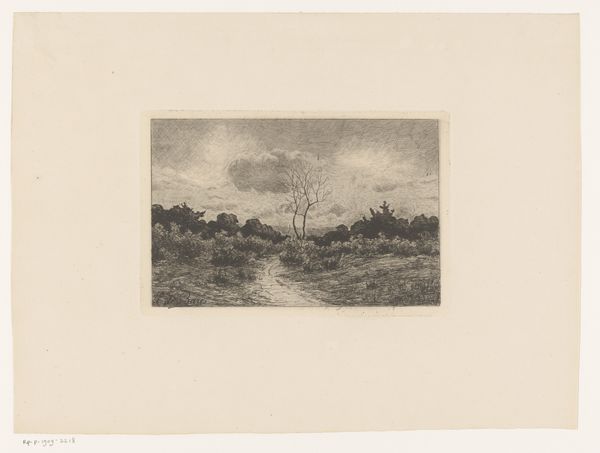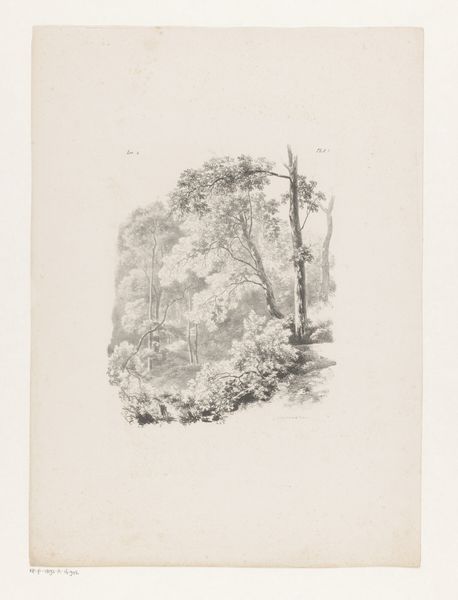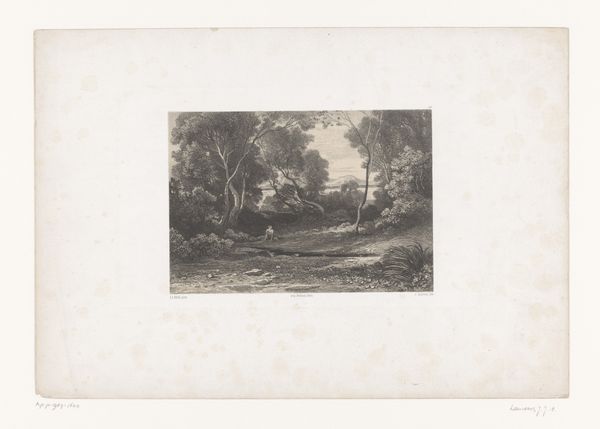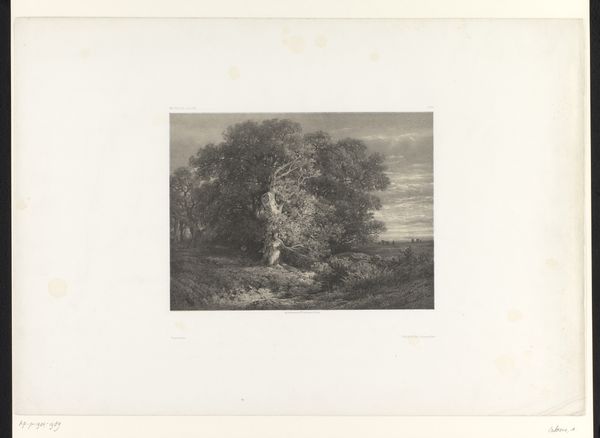
print, etching
# print
#
impressionism
#
etching
#
landscape
#
realism
Dimensions: 138 mm (height) x 197 mm (width) (plademaal)
Curator: Let’s turn our attention to Vilhelm Kyhn’s "Egetræer ved udkanten af en skov", or "Oak Trees at the Edge of a Forest", created in 1886. It's an etching. Editor: It has a tranquil feel. The landscape appears meticulously crafted. There is an enchanting quality to its realism, as it captures the natural beauty, but something feels inaccessible about this space. Curator: Indeed. Notice how Kyhn employs etching to build texture and depth. Observe the detailed work of the vegetation with its intricate foliage—and how he captures the shifting light filtering through the leaves. The trees’ structure is built up gradually with dense, closely positioned marks that produce a play of tonal variations. Editor: That interplay is fascinating when considering the piece’s era. How was this image of undisturbed Danish countryside perceived amidst rapid industrialization and urbanization? The elite probably viewed these spaces very differently from those displaced by such shifts. Did this forest become an idealized vision of national identity and heritage for a rapidly changing Denmark, accessible only to a privileged segment? Curator: That is very interesting to consider, though the work should be observed formally as well. Let's remember to view its remarkable structural cohesion first and foremost. The carefully controlled lines create a balanced composition, directing the viewer's eye into the scene. He is working with impressions and realism to generate naturalism. Editor: The print certainly exemplifies idealized naturalism. While I appreciate its artistic merits, I can’t help but view the work critically by reflecting upon these landscape depictions. Who benefits from such imagery and how does it affect the broader culture of that time? It may highlight concerns of conservation versus resource consumption then and even now. Curator: A perspective worth noting. For me, it ultimately expresses the artist’s command of the medium—the sheer skill of capturing a fleeting moment in the forest with such nuance. Editor: And that technical expertise doesn’t exist in a vacuum. Reflecting on the context of its creation invites a richer appreciation and awareness, even discomfort, as we consider its layered implications.
Comments
No comments
Be the first to comment and join the conversation on the ultimate creative platform.
